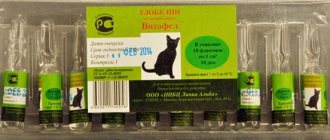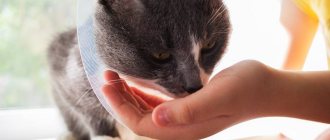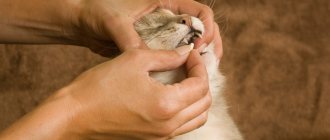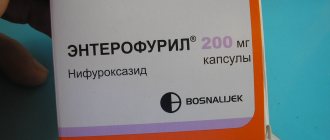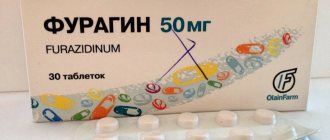| Isoniazid | |
| Isoniazid [1] | |
| Chemical compound | |
| IUPAC | Isonicotinic acid hydrazide |
| Gross formula | C6H7N3O |
| Molar mass | 137,14 |
| CAS | 54-85-3 |
| PubChem | 3767 |
| DrugBank | APRD01055 |
| Classification | |
| Pharmacol. group | Hydrazides |
| ATX | J04AC01 |
| ICD-10 | A 15 15. —A 19 19. |
| Pharmacokinetics | |
| Plasma protein binding | insignificant (0-10%) |
| Metabolism | liver; CYP450 inhibitor: 2C19, 3A4 |
| Half-life | 1 hour (“fast inactivators”), 3 hours (“slow inactivators”) [2] |
| Excretion | urine (basic), feces |
| Dosage forms | |
| tablets, injection solution | |
| Methods of administration | |
| Inside, IM, IV, intracavernosally, inhalation. | |
| Other names | |
| Isoniazid (Tubazid), Laniazid, Nydrazid | |
| Media files on Wikimedia Commons | |
Isoniazid
(tubazid) is a drug, anti-tuberculosis drug (ATD), isonicotinic acid hydrazide (GINA). Indicated for the treatment of tuberculosis of all forms of localization. It is dangerous for dogs and canines in general, since they are hypersensitive to the drug.
What is Isoniazid?
The drug is a white tablet, which is produced primarily for people with tuberculosis. It is a derivative of isonicotinic acid hydrazite. One tablet contains the following substances:
- isoniazid;
- calcium hydrogen phosphate;
- talc;
- magnesium stearate;
- corn starch;
- sodium edetate;
- colloidal silicon dioxide.
Often the drug is added to edible bait, which is given to the animal for the purpose of poisoning.
It is a vital medicine for humans, therefore it is widely available in pharmacies and is available without a prescription. This is taken advantage of by cruel people who poison dogs that are highly sensitive to the drug. Cats can also become poisoned and die. Once in the cat’s body, “Isoniazid” or “Tubazid” acts on the central nervous system, which inhibits the functions of vision, hearing, and movement. A domestic cat can swallow poison if the owner has tuberculosis and leaves the drug in a place accessible to the pet. A pet can be deliberately poisoned by heartless neighbors who do not tolerate animals by adding poison to their food.
Isoniazid poisoning in dogs and cats
Nowadays, cases of poisoning of domestic animals with the drug Isoniazid (Tubazid) occur quite often. They write about this in newspapers and talk about it on television. It is used by dog hunters to deliberately kill stray cats and dogs.
The dangerous effects of isoniazid can be easily prevented if the symptoms of poisoning are noticed in a timely manner and appropriate and timely assistance is provided to the animal.
Lethal dose and symptoms of poisoning
The instructions for use indicate that the lethal dose for a cat is 50 mg per kilogram of the cat’s weight. One tablet of Isoniazid contains 100 or 300 mg of a toxic substance, depending on the dosage. Therefore, eating one compressed medicinal powder can cause the death of an animal. Overdose is manifested by the following symptoms:
One of the symptoms of pet poisoning can be the appearance of seizures.
- retardation of movements (“drunk gait”);
- paw tremor;
- severe weakness, the animal switches off;
- confusion, when the animal does not understand where it is and does not recognize family members;
- profuse drooling with foam;
- vomiting with blood;
- convulsive syndrome;
- heart rhythm disturbance;
- instability of blood pressure;
- often shallow breathing;
- bronchospasm and suffocation;
- paralysis of limbs;
- coma and death.
Return to contents
Cases of drug poisoning
The anti-tuberculosis drug Isoniazid is used to treat people, so it is freely available without a doctor's prescription. For cats, the active substances produce a toxic effect, despite the fact that they are able to tolerate poisoning more easily than dogs. Medicine can enter the pet’s body in two cases :
- When eating bait on the street that contains a lethal pill. However, dog hunters can add an antiemetic drug to relieve some of the symptoms of poisoning;
- If accidentally eaten from a first aid kit left in an unprotected place.
© shutterstock
Emergency care: how to help a cat?
If poisoning with Isoniazid occurs, you should immediately use an antidote (antidote) in the form of pyridoxine (vitamin B6). The dosage is 1 ml/5 kg body weight. But even if the administered dose is larger, it will not harm the cat. Emergency assistance must be provided within 60 minutes. after the poison gets inside. Algorithm of actions:
A moderately concentrated solution of potassium permanganate, which requires about 50 ml for a cat, reduces the effect of poisons.
Providing first aid for poisoning
Emergency assistance begins with cleansing the stomach, provided that the dog is conscious and does not have a convulsive syndrome - prepare a solution of 200 ml of warm water and 15 g of salt or soda, use a syringe without a needle to inject all the liquid into the animal’s mouth. To induce vomiting, you can combine peroxide and water in equal parts and give the animal at a rate of 5 ml/kg.
Then give the dog an antidote, activated carbon - 1-2 tablets/kg, Enterosgel or Polysorb - 10 g dissolved in 100 ml of water; to reduce signs of intoxication, any adsorbent that is at hand is suitable. After providing emergency assistance, take your pet to the clinic.
Even with severe, frequent vomiting, you should not give the animal antiemetic drugs - the body tries to cleanse itself of toxic substances on its own. It is prohibited to use a solution based on potassium permanganate for washing.
If the dog has convulsions, more than 2 hours have passed since the poisoning, then you must first administer the antidote, then carry out all other rescue measures.
The owner has no more than 3 minutes to perform gastric lavage when the first symptoms of poisoning appear; the active substances of the medicine are quickly absorbed into the gastrointestinal tract and penetrate into the general bloodstream. The injured animal must be taken to a specialized clinic within half an hour.
Antidote
Since isoniazid poisoning causes a severe deficiency of pyridoxine, the only effective antidote is vitamin B6.
The medicine is administered intramuscularly, intravenously, subcutaneously - 1 ml per 5 kg of weight, but you don’t have to carefully calculate the dosage, even if you introduce more vitamin, the drug will not harm the pet, since it is absolutely non-toxic and does not accumulate in the body.
How is the treatment carried out?
Therapy is prescribed by a doctor depending on the severity of the animal; self-medication is prohibited. The poison has a negative effect on the liver and can provoke drug-induced hepatitis, therefore the use of hepatoprotectors is recommended. Since Isoniazid affects the central nervous system and causes convulsions, anticonvulsant and sedative medications are used. Diazepam is effective, as it enhances the delivery of aminobutyric acid to the brain, which prevents the development of seizures and helps avoid death. General strengthening drugs are also used.
Effect on the dog
Isoniazid is safe for humans and many other animals, helps to quickly cope with a serious illness, and even with an overdose it is not difficult to eliminate the negative consequences. But for dogs, this drug is poison, since their bodies do not synthesize substances that break down isoniazid.
When a large dose of anti-tuberculosis drug accumulates or is simultaneously taken in the dog’s body, the amount of pyridoxine sharply decreases, blood circulation slows down, brain hypoxia, convulsions, hypoglycemic coma develops, the body stops functioning, and death occurs.
An animal can be poisoned by Isoniazid while walking, or at home if there is a person in the family who takes an anti-tuberculosis drug.
Prevention
To prevent the pet from being poisoned by Isoniazid, the sick owner should put the drug out of the reach of cats. Veterinarians do not recommend letting pets out for walks unattended. It is better to walk the animal on a leash. Before going outside, it is advisable to feed the cat so that it is well-fed and there is no temptation to pick up a piece from the ground. Or you should teach the cat not to take food from strangers. If the cat does visit the street alone, it is recommended to always have the drug “Pyridoxine” at home. To avoid poisoning with other substances, for example, the anti-flea "Deltsid", it is necessary to strictly adhere to the dosage.
Poisoning is a disease caused by a toxin (poison) entering the body. Toxins can be chemical compounds (household chemicals, drugs, plants), microorganisms (endo- and exotoxins), an example can be food poisoning. Diagnosis of poisoning is complex due to the diversity of toxins, the difficulty of identifying them, and the similarity of clinical manifestations. In veterinary laboratory practice, poisoning accounts for a small proportion of pathologies. Most intoxications occur when animals accidentally ingest household chemicals, medications, or substandard products.
Here is a list of the main substances (medicines) available to animals that can cause poisoning. Pay attention to the similarity of symptoms!
Adrenaline . Clinical signs: pallor of the skin and mucous membranes, cyanosis, tachycardia, dilated pupils, convulsions, cardiac arrhythmia, coma.
Amidopyrine . Clinical signs: vomiting, shortness of breath, tachycardia, decreased body temperature, convulsions, coma, agranulocytosis, blood in the stool.
Amoxicillin. Clinical signs: skin rash, vomiting.
Anestezin . Clinical signs: cyanosis of the skin and mucous membranes, shortness of breath, coma, hemoglobinuria, allergic reactions.
Anticoagulants. Clinical signs: multiple bleeding, hematuria, hemorrhagic anemia.
Atropine . Clinical signs: tachycardia, less often bradycardia, increased temperature, dilated pupils, agitation, “catching flies.”
Acetylsalicylic acid. Clinical signs: blood in the stool, coma.
Barbiturates. Clinical signs: coma, shortness of breath, cyanosis, bradycardia.
Barium compounds . Clinical signs: vomiting, diarrhea, bradycardia, extrasystole, shortness of breath, cyanosis, adynamia, convulsions.
Benzylpenicillin . Clinical signs: anaphylactic shock (shortness of breath, restlessness, adynamia, cyanosis), urticaria (blisters on the skin).
Gasoline . Clinical signs: agitation, then depression, shortness of breath, convulsions, jaundice.
Boric acid . Clinical signs: vomiting, diarrhea, dehydration, convulsions.
Bunamidine (anthelmintic) Clinical signs: shortness of breath, ataxia, vomiting, diarrhea, weakness, convulsions, pulmonary hemorrhage, possible death.
Butadion . Clinical signs: anemia, leukopenia, thrombocytopenia, vomiting, blood in the stool, diarrhea, possible death.
Vitamin D. Clinical signs: vomiting, lethargy, adynamia, increased body temperature, hematuria, in severe poisoning - convulsions, in chronic poisoning - osteoporosis, dermatoses.
Hexachloran Hexachlorophen (insecticide) Clinical signs: vomiting, diarrhea, salivation, ataxia, convulsions, signs of liver and kidney damage.
Hemodez . Clinical signs: a few minutes after administration, the skin and mucous membranes turn red, the face swells, and itchy skin appears.
Gentamicin . Clinical signs: irritation at the injection site, swelling of the lips, eyelids, vulva.
Cardiac glycosides . Clinical signs: vomiting, diarrhea, bradycardia, tachycardia, extrasystole, convulsions.
Dexamethasone . Clinical signs: polyuria, polydipsia, vomiting, diarrhea, blood in the stool, bulimia.
Dertil . (anthelmintic). Clinical signs: vomiting, diarrhea, drooling, fever, shortness of breath, possible death.
Prevention of pet poisoning
Tubazide is used much less frequently for poisoning cats than for dogs. But this does not mean that cats cannot suffer from such intoxication. To protect them, you simply need to not let the fluffies outside unattended.
With dogs it is a little more complicated, especially if the dog belongs to the category of large breeds. She won't be able to sit at home for long. She needs to be walked so that her four-legged friend can perform his daily toilet routine. Walking is also necessary to keep the dog active. But it is during a walk that the dog can pick up a poisoned piece of food. To prevent this from happening, the animal must be specially trained. This will allow him to learn to take food only from the hands of the owner or people close to him after a certain command.
You should also not leave your pet unattended. And be sure to muzzle your dog. This will comply with the rules of behavior with animals in public places and will protect the dog from accidentally eating nasty things.
Be sure to follow the news flow. This will allow you to find out in time when the next wave of dog hunters appears in the city. At such times, it is better to reduce the period and radius of the walk. For safety, switching to a short leash is encouraged.
An additional precaution may be to replenish your home medicine cabinet with specialized medications. It is also worth calculating in advance the possible dosage of the antidote for the weight of your dog. It is better to write down the result and hang it in a visible place.
pharmachologic effect
What are Isoniazid tablets for?
Antituberculosis drug. The active component is the main representative among isonicotinic acid derivatives, and has found its use in anti-tuberculosis therapy. Other drugs from this group (for example, Phtivazid ) are considered to be derivatives of isonicotinic acid hydrazide. In relation to mycobacteria - the causative agent of tuberculosis - the active component Isoniazid exhibits high bacteriological activity. In relation to other pathogens of infectious diseases, no pronounced chemotherapeutic effect is observed.
The active substance has a bactericidal effect on extracellular and intracellular forms of Mycobacterium tuberculosis . Actively dividing forms of mycobacteria are most susceptible to the action of the drug. There is no exact description of the mechanism of action. There is an opinion that the principle of action of the drug is based on the ability to suppress the process of synthesis of mycolic acids, which are part of the cell wall of the microorganism.
Pharmacological properties [edit | edit code ]
The mechanism of action of isoniazid is associated with inhibition of the synthesis of mycolic acid in the cell wall of Mycobacterium tuberculosis (MBT). It has a bactericidal effect on MBT in the reproduction stage and bacteriostatic on resting MBT. It is highly effective, but with monotherapy, resistance quickly develops.
The drug is well absorbed from the gastrointestinal tract, therapeutic concentrations in the blood are achieved 1-2 hours after administration. Metabolized in the liver by the cytochrome P-450 system.
It is hepatotoxic and can cause isoniazid hepatitis (in some cases).
Pharmacodynamics and pharmacokinetics
The active component is well absorbed from the lumen of the digestive tract. 1-4 hours after oral administration, the maximum concentration of the active substance is recorded in the blood. Tuberculostatic concentration (the level of the active component in the blood that suppresses the vital activity of the tuberculosis pathogen) persists for 6-24 hours. Isoniazid easily crosses the blood-brain barrier and penetrates various fluids and tissues in the body. The main route of elimination is through the renal system.
Indications for use of Isoniazid
The medication is prescribed for the treatment of active tuberculosis.
Main indications for use:
- tuberculous meningitis (combination therapy);
- prevention of the development of tuberculosis in persons who were in contact with a sick patient;
- prevention of the development of tuberculosis in persons who have given a positive reaction to Tuberculin (more than 5 mm) with a confirmed x-ray picture, which indicates a non-progressive process;
- prevention of the development of tuberculosis in children under 4 years of age who have given a positive reaction to tuberculin (more than 10 mm) with a high risk of dissemination.
High dosages have a toxic effect, which is why dogs are poisoned with Isoniazid.
Risk factors
Absolutely all patients who take this drug are at risk of poisoning. But the greatest likelihood of poisoning is in those who take the drug for a long time, as well as in children and the elderly. The risk of poisoning is especially high in people who have impaired kidney and liver function, since it is these organs that neutralize and remove toxins. People who have a lack of pyridoxine in their body are also at increased risk.
[21], [22], [23], [24], [25], [26], [27]
Side effects of Isoniazid
Blood system (hemostasis, hematopoiesis) and cardiovascular system:
- pain in the heart area;
- increased pulmonary blood pressure;
- cardiopalmus;
- angina pectoris;
- increased severity of ischemic processes in the myocardium in elderly people;
- thrombocytopenia;
- agranulocytosis;
- increased blood pressure levels;
- sideroblastic anemia;
- hemolysis (with a lack of glucose-6-phosphate dehydrogenase);
- aplastic anemia.
Sense organs, nervous system:
- intoxication psychosis;
- generalized seizures;
- paresthesia;
- dizziness;
- polyneuritis;
- paralysis of limbs;
- atrophy and neuritis of the optic nerve;
- euphoria;
- encephalopathy;
- insomnia;
- irritability;
- headache;
- amnesia;
- peripheral neuritis;
- increased frequency of seizures in people suffering from epilepsy.
Digestive tract:
- vomit;
- nausea;
- dry mouth;
- toxic hepatitis;
- increased activity of ALT, AST, bilirubin ;
- prodromal symptoms of hepatitis (unusual weakness or fatigue, vomiting, loss of appetite and nausea);
- hyperbilirubinemia.
Genitourinary tract:
- menorrhagia;
- gynecomastia;
- dysmenorrhea.
Allergic responses:
- skin eruptions , rash ;
- eosinophilia.
Other reactions:
- fever;
- muscle twitching;
- phlebitis (with intravenous injections);
- "Cushingoid";
- muscle atrophy;
- hyperglycemia.
The side effects of Tubazid are similar, because. the active component is the same active substance.
Overdose
Acute overdose
Taking high doses can provoke the development of metabolic acidosis and cause epileptic seizures that do not respond to standard therapy. coma and death may develop
The first signs of poisoning are recorded within 30 minutes after taking the medication:
- tachycardia;
- vomit;
- dizziness;
- slurred speech.
In acute poisoning, an epileptic seizure can develop at lightning speed without previous symptoms. It is enough to take 20 mg/kg of Isoniazid to develop a seizure. In severe poisoning, a coma develops, which can last 24-36 hours.
Acute toxic manifestations of poisoning:
- hyperthermia;
- arterial hypotension;
- glucosuria;
- hyperglycemia;
- acute renal failure;
- ketonuria.
Chronic overdose
Long-term therapy with high doses causes necrosis of hepatocytes. In the first months of treatment, patients often experience an increase in ALT and AST. Within a year, laboratory tests may reveal signs of hepatitis . With correct treatment tactics and adequate dosing, clinically significant hepatitis develops in only 0.1% of patients. The mortality rate from liver damage during treatment with an anti-tuberculosis drug is 0.001%.
Often, against the background of long-term therapy with high doses, optic neuritis and polyneuropathy . The neurotoxic effect occurs with pyridoxine deficiency and is significantly enhanced by the formation of inactive complexes of hydrazones with pyridoxine. Typical manifestations of polyneuropathy are sensory disturbances of the “socks” and “gloves” type in the distal parts of the extremities with a gradual spread higher. Additionally, muscle weakness and myalgia . When the optic nerve is damaged, visual perception deteriorates, and in severe cases, a central scotoma . Neurotoxicity leads to the development of psychosis, ataxia , hallucinations and coma.
Treatment for overdose
First aid is aimed at stopping an epileptic seizure, restoring airway patency, stabilizing basic physiological indicators, and performing infusion therapy.
If severe acidosis develops, intravenous sodium bicarbonate . Taking enterosorbents and activated carbon for removing the active substance from the digestive tract. Neurological manifestations are stopped by the administration of Vitamin B6 (with the development of coma, metabolic acidosis and convulsive syndrome). When first administered, the maximum dose of Pyridoxine is 5 g. To enhance the effect of Vitamin B6, benzodiazepines . With the help of hemodialysis, it is possible to accelerate the elimination of anti-tuberculosis drugs (rarely used in practice).
A threefold increase in liver enzymes indicates the development of drug-induced hepatitis and requires discontinuation of the medication. Vitamin B6 is ineffective in such cases. Pyridoxine is used only for the prevention and treatment of polyneuropathies (50 mg/day).
Specifics and types of poisoning
Before you find out what to do if a kitten or an adult animal is poisoned, it is important to understand the essence of cats. In addition, in case of poisoning in pets, it is necessary to find out exactly how treatment is carried out, what can be given to a sick animal from the first aid kit, and also what the main symptoms of intoxication look like in a poisoned pet. There is no need to treat cat poisoning yourself. It is better to give the poisoned cat what it needs, namely first aid and examination by a veterinarian!
It is important to remember that cats are unusually careful creatures, which is why the chances of accidental poisoning are absolutely minuscule. Cats get poisoned when they are stupid or simply sick, because many have a weak sense of smell, and some have no sense of smell at all. As for other cases, only the owners of the pet are to blame for such a tragedy, as well as their careless actions, improper treatment for certain pathologies, especially when strong antibiotics are used.
It is important to know that poisoning can be food or non-food. As for food intoxication, toxic substances and poisons penetrate the animal’s body along with feed and water, namely through the digestive system. Please note that in poisoned cats, the poison very quickly affects the circulatory system, so many internal organs are damaged.
Regarding non-food poisoning, in this situation one can suspect the penetration of poisons not through the gastrointestinal tract, but through the mucous membranes, lungs and skin. Accurate information is given that cats can easily be poisoned by the following substances: tubazide, hydrogen sulphide, and bleach. In addition, you can very often find cases of cats being poisoned by rat poisons. The fact is that people give poison to rodents so that the rats no longer disturb their home or household. It is worth noting that if you give poison to mice and rats, then the cat can eat the poisoned rodent, as a result of which you can observe pronounced signs of the cat being poisoned by rat poison.
In addition to all of the above, before starting treatment and giving adequate help to your cat at home, it is important to understand some other types of poisoning. Sometimes plant intoxication occurs, which is caused by exposure to toxic substances of plant origin. Relative drug intoxication is mainly a drug overdose, as well as taking medications to which there is an individual intolerance. There is also a type of poisoning in cats called intoxication with toxic gases: chlorine vapor, carbon monoxide, various toxic fumes. Poisoning from household chemicals occurs very rarely.
However, cases are mainly observed with feed. As for the principle of exposure, there is local and general poisoning. The local form is manifested by disturbances in the place where there was contact with the poison. In relative general terms, in this case there are lesions of internal organs and systems.
As for isoniazid, the dose of poisoning for cats is much higher than for dogs. Isonazid is a drug that is used to treat various forms and localizations of tuberculosis. It is mainly used to bait dogs because they lack a special enzyme that can digest the medicine. However, sometimes there are cases of isoniazid intoxication in cats, but the dosage will be much higher.
To give the right medicine, you should understand that there is a distinction between chronic and acute intoxication among cats. The acute type is characterized by the intake of a larger portion of the toxic component, which provokes disruption of vital functions, which can cause the death of the pet. The chronic type of intoxication is considered to be a consequence of a long, gradual influence of the toxic component on the body, usually in a small dosage.
Interaction
The risk of developing hepatic toxicity increases significantly when taking Rifampicin (especially in people suffering from various diseases of the hepatic system). A similar effect is observed when treating with Paracetamol , because Isoniazid is capable of inducing cytochrome P450 , which increases the number of toxic metabolites.
The metabolism of Phenytoin and Carbamazepine slows down due to an increase in their concentration in plasma (in addition, an increase in toxic effects is noted). Absorption of the active substance slows down when taking antacids (the effect is enhanced when taking aluminum-containing antacids).
There is a mutual enhancement of the effects of other anti-tuberculosis drugs. Renal excretion slows down with simultaneous therapy with isoniazid and streptomycin . Isoflurane potentiates hepatotoxicity. The severity of side effects decreases when taking Glutamic acid and Vitamin B6. The opposite effect is observed when treated with MAO inhibitors .
Isoniazid can enhance the effect of Theophylline , indirect anticoagulants, Ethosuximide , Carbamazepine , and benzodiazepines. The active substance reduces the concentration of Ketoconazole .
special instructions
The medication is not prescribed in a dose of more than 10 mg/kg for the following pathology:
- widespread atherosclerosis;
- severe arterial hypertension;
- psoriasis;
- bronchial asthma;
- IHD;
- diseases of the nervous system;
- myxedema;
- eczema in the acute stage;
- severe course of cardiovascular failure.
Parallel administration of other anti-tuberculosis drugs avoids the rapid development of resistance. It is recommended to remain in bed for 1-1.5 hours after the injection.
Reducing the severity of side effects is achieved by simultaneous administration of Glutamic acid (orally), Pyridoxine (intramuscular administration, oral administration), Thiamine (intramuscular administration).
It is important to remember that the metabolism of the active substance is carried out in the hepatic system by acetylation to metabolites that do not have activity. The degree of acetylation is influenced by genetic predisposition. It is recommended to determine the rate of inactivation of Isoniazid by the level of the active substance in urine and blood due to the unequal metabolism in patients. Persons with a high rate of inactivation of the active substance are advised to prescribe large doses.
